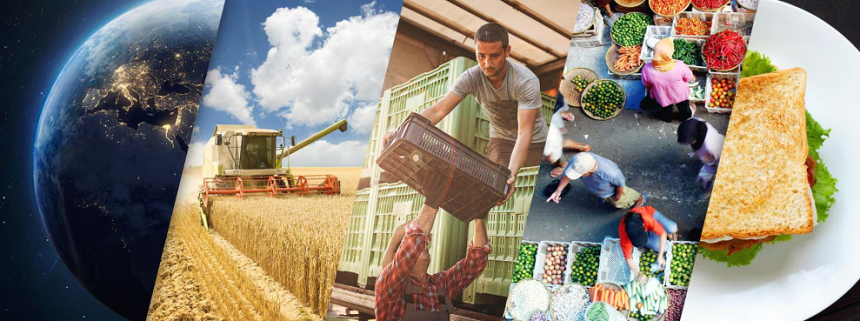World Hunger by the numbers
The world produces enough food to feed all 8 billion people, yet 733 million people (1 in 11) still go hungry every day. Hunger rates are particularly high in Africa, where 1 in 5 people face hunger daily. Approximately 2.8 billion people globally, or 35% of the population, cannot afford a healthy diet. In low-income countries, this number rises to 71.5%, while in high-income countries; it is significantly lower at 6.3%.
According to the 2024 Global Hunger Index, hunger levels are ranked as “Serious” in 36 countries, and six countries—Burundi, Chad, Madagascar, Somalia, South Sudan, and Yemen—are classified as having “Alarming” hunger levels. Since 2019, the number of people experiencing hunger has increased by about 152 million. The Integrated Food Phase Classification (IPC) estimates that 1.33 million people worldwide are currently experiencing famine or famine-like conditions. Additionally, half of all child deaths are linked to malnutrition, and 9 million people die annually from hunger-related causes, many of whom are children under the age of five.
By 2050, the world will need to feed nearly 10 billion people, a feat complicated by climate change, dwindling natural resources, and the growing fragility of global food systems. While advancements in agriculture have historically kept hunger at bay, the challenges ahead require a combination of traditional and unconventional approaches. Securing food for the future means embracing strategies that work both “inside the box”—building on proven systems—and “outside the box”—exploring groundbreaking innovations. This article delves into a dual framework of solutions, blending conventional agricultural methods with disruptive ideas to ensure a sustainable and resilient global food supply.
Inside the Box: Leveraging Proven Strategies
Traditional and well-tested methods form the backbone of global food security. These “inside the box” solutions rely on refining existing systems and improving upon established practices.
- Sustainable Intensification of Agriculture: The concept of sustainable intensification involves producing more food from the same area of land while minimizing environmental impact.
- Efficient Water Use: Technologies like drip irrigation and precision watering reduce water waste in farming.
- Integrated Pest Management: Using natural predators and biopesticides instead of chemical pesticides helps control pests sustainably.
- Optimized Fertilizer Use: Precision agriculture ensures fertilizers are applied where and when needed, reducing waste and runoff.
Climate-Resilient Crop Breeding
Breeding programs have historically boosted yields and improved resilience. Building on these successes, breeders are developing:
- Drought-resistant maize and wheat.
- Submergence-tolerant rice for flood-prone areas.
- Salt-tolerant crops for coastal and degraded lands.
Agroecological Practices
Agroecology incorporates ecological principles into farming practices.
- Crop Diversification: Rotating and intercropping a variety of crops improves soil fertility and reduces pest outbreaks.
- Agroforestry: Integrating trees into farming systems stabilizes soils, enhances biodiversity, and provides additional income sources.
- Organic Farming: Avoiding synthetic inputs protects soil health and biodiversity.
Infrastructure Investments
- Reliable infrastructure ensures that food reaches consumers efficiently.
- Building better roads and storage facilities reduces post-harvest losses.
- Expanding cold chain logistics minimizes spoilage of perishable goods.
- Investing in transportation systems enhances access to markets.
Empowering Farmers
Farmers are the frontline defenders of food security. Proven strategies to empower them include:
- Training programs to adopt modern techniques.
- Access to affordable credit and crop insurance.
- Extension services providing region-specific agricultural advice.
Outside the Box: Embracing Bold Innovations
While traditional strategies are vital, securing food by 2050 also requires bold, unconventional ideas that challenge the status quo. These “outside the box” solutions rely on harnessing technology, reimagining food production, and addressing inefficiencies in the global food system.
Vertical Farming and Urban Agriculture
With arable land diminishing, vertical farming offers a space-saving, high-tech solution.
- Hydroponics and Aeroponics: Plants grow in nutrient-rich solutions or mist, requiring less water and no soil.
- Urban Rooftop Farms: Utilizing city spaces for farming reduces transportation emissions and ensures fresh produce for urban populations.
Cellular Agriculture
Lab-grown meat and dairy products offer a sustainable alternative to traditional livestock farming.
- Cultured Meat: Reduces land and water use while eliminating methane emissions from livestock.
- Precision Fermentation: Produces dairy proteins like casein and whey without cows, offering environmentally friendly milk alternatives.
Harnessing Artificial Intelligence (AI) and Big Data
AI and data analytics are transforming how we farm and manage resources.
- Predictive Analytics: AI models forecast weather patterns, pests, and crop diseases, enabling farmers to act proactively.
- Precision Farming: Drones and sensors monitor soil conditions, crop health, and moisture levels, optimizing inputs.
- Supply Chain Optimization: AI improves logistics, reducing food waste and ensuring timely delivery.
Alternative Protein Sources
As conventional protein sources become unsustainable, alternatives are gaining traction.
- Insect-Based Proteins: Edible insects like crickets and mealworms provide high-quality protein with minimal resource use.
- Plant-Based Proteins: Innovations in plant-based meat substitutes mimic the taste and texture of traditional meat.
- Algae Farming: Microalgae like spirulina offer protein-rich food with a tiny ecological footprint.
Ocean Farming
The oceans hold vast potential for sustainable food production.
- Seaweed Farming: Seaweed grows rapidly, absorbs carbon dioxide, and provides a nutritious food source.
- Aquaculture Innovations: Offshore fish farms and integrated multi-trophic systems reduce the environmental impact of fish farming.
Biotechnology and Gene Editing
Biotechnology is pushing the boundaries of what crops can achieve.
- CRISPR-Cas9: Edits plant genes to enhance yield, nutrition, and resilience.
- Synthetic Biology: Engineers crops to produce nutrients, pharmaceuticals, or biofuels.
- Self-Fertilizing Crops: New technologies allow plants to fix nitrogen from the atmosphere, reducing fertilizer dependence.
Revolutionizing Food Waste Management
Up to one-third of all food produced is wasted. Addressing this issue can significantly enhance food availability.
- Smart Packaging: Sensors in packaging can indicate freshness, reducing unnecessary waste.
- Food Redistribution Platforms: Apps connect surplus food from producers and retailers to those in need.
- Composting Innovations: Advanced composting systems turn food waste into high-quality fertilizers.
A Unified Approach: Combining Inside and Outside the Box
Neither traditional nor innovative strategies alone can secure food for 2050. The solution lies in combining both approaches. For instance:
- Breeding for Vertical Farms: Developing crops optimized for indoor farming conditions.
- AI in Agroecology: Using AI to design crop rotations that maximize soil health.
- Urban Agroforestry: Integrating trees into cityscapes to produce food and combat urban heat islands.
This hybrid approach ensures that established systems are enhanced by innovation, creating a resilient and sustainable global food system.
The Role of Policy and Collaboration
Achieving food security requires supportive policies and collaborative efforts.
- Increased R&D Funding: Governments must invest in both traditional and innovative agricultural research.
- Global Partnerships: International collaboration can share knowledge, technologies, and resources.
- Consumer Education: Encouraging sustainable eating habits reduces pressure on food systems.
- Incentives for Innovation: Subsidies and grants can accelerate the adoption of outside-the-box solutions.
The journey to feeding 10 billion people by 2050 is fraught with challenges but also brimming with opportunities. By thinking both inside and outside the box, we can create a future where food is abundant, equitable, and sustainable.
(Author is Scientist at MRCFC Khudwani, SKUAST-Kashmir and Visiting Scientist at University of Nebraska Lincon, USA. Feedback: [email protected] )









